Director
Adam Arkin is the Dean A. Richard Newton Memorial Professor in the Department of Bioengineering at the University of California, Berkeley and Senior Faculty Scientist at the Lawrence Berkeley National Laboratory. He and his laboratory develop experimental and computational technologies for discovery, prediction, control and design of microbial and viral functions and behaviors in environmental contexts.
He is the chief scientist of the Department of Energy Scientific Focus Area, ENIGMA(Ecosystems and Networks Integrated with Genes and Molecular Assemblies, http://enigma.lbl.gov), designed to understand, at a molecular level, the impact of microbial communities on their ecosystems with specific focus on terrestrial communities in contaminated watersheds. He also directs the Department of Energy Systems Biology Knowledgebase (KBase) program: (http://kbase.us) an open platform for comparative functional genomics, systems and synthetic biology for microbes, plants and their communities, and for sharing results and methods with other scientists. He is director of the newly announced Center for Utilization of Biological Engineering in Space which seeks microbial and plant-based biological solutions for in situ resource utilization that reduce the launch mass and improves reliability and quality of food, pharmaceuticals, fuels and materials for astronauts on a mission to Mars. Finally, he is the Co-Director of the Berkeley Synthetic Biology Institute, which brings together U.C. Berkeley and Lawrence Berkeley National Laboratory Scientists with Industry Partners to forward technology and applications for sustainable biomanufacturing.
Senior Scientist

Jake hails from the far-away lands of the Midwest. He received his Bachelor's degree in Genetics from the University of Wisconsin-Madison where he was introduced to the world of scientific research through the study of the evolution of gene expression regulation in the yeast Saccharomyces cerevisiae. Upon graduation, Jake began his graduate work in Marine Studies at the University of Delaware where he studied the regulation of energy metabolism in green sulfur bacteria (the Chlorobiaceae). Being a microbiologist that had always admired synthetic biology from a distance, and one that was enamored with space exploration, Jake joined the Arkin Lab at the University of California-Berkeley as a postdoc to pursue applications of microbial engineering to space exploration and colonization. Jake's research interests include environmental microbiology, microbial physiology/systems biology, genetics, synthetic biology, and space bioengineering.
Postdoctoral Scholar

Dr. Aaron J. Berliner is a postdoctoral scholar at the University of California Berkeley, as well as the major domo of the NASA-funded Space Technology Research Institute (STRI) CUBES (Center for the Utilization of Biological Engineering in Space). He obtained both his Ph.D. in Bioengineering under Dr. Adam Arkin and his M.S. in Nuclear Engineering under Dr. Bernstein from UC Berkeley in 2022. Prior to this, he studied biomedical engineering, and synthetic & systems biology at Boston University. Dr. Berliner began his career at the NASA Ames Research Center under Dr John Hogan and Dr. John Cumbers, where he worked on projects involving 3D printing, bioelectrochemistry, and astrobiology. In 2013, he joined the Life Sciences group of Autodesk Research in San Francisco, working on diverse projects such as bioprinting, software engineering, synthetic virology, and DNA origami. Accepting that he had caught the “space bug,” he returned to academia to help establish CUBES and begin work on Crucible, an open-source reactor for space synthetic biology experiments.
With a strong background in bioengineering, nuclear engineering, and systems engineering, Dr. Berliner has made significant contributions to the field of Space Bioprocess Engineering (SBE), an interdisciplinary field integrating bioengineering principles to develop biotechnologies for long-term space missions. His primary focus has been designing a biomanufactory-driven reference mission architecture for human exploration of Mars, aiding space agencies in their mission planning by providing parametric designs on requirements and operational aspects driven by specific biological systems, including advanced life support, biological and chemical manufacturing, and in situ resource utilization (ISRU). Dr. Berliner's vision is to harness living systems to support off-world biomanufacturing, realizing the inherent mass, power, and volume advantages offered by biotechnology over traditional mechanical and chemical approaches. His expertise and commitment to the field in the integration of bioengineering into human space exploration has most recently been acknowledged with his acceptance of a lectureship at UC Berkeley in the new Program in Aerospace Engineering.
Alumni

Anthony Abel is a Ph.D. student in Chemical Engineering in the Clark Laboratory at UC Berkeley. Previously, he earned his B.S. in Chemical Engineering and M.S. in Materials Science at Drexel University in Philadelphia, PA, where he developed solution deposition techniques for inexpensive semiconductor materials. He has previously worked for the National Renewable Energy Laboratory, where he designed reactors for the sustainable production of hydrogen via photoelectrochemical water splitting.
Anthony’s research interests lie at the intersection of chemical engineering, materials science, and microbial synthesis. Within CUBES, he will focus on the simulation and design of hybrid bioinorganic reactors and engineering microbes to function optimally within this artificial environment.
In his spare time, Anthony is a mentor for Bay Area Graduate Pathways to STEM, and enjoys reading science fiction and playing squash.

Jeremy Adams is a Ph.D. student in Chemical and Biomolecular Engineering at UC Berkeley, currently working in the Clark Lab. He received a BSE in Chemical Engineering from Arizona State University in 2017. Jeremy’s research interests lie in the intersection of synthetic biology and biochemical engineering, particularly towards the development of sustainable biomanufacturing processes. His work in CUBES involves engineering lithoautotrophic microbes to convert Mars-available resources into useful products, as well as engineering export pathways of those products to simplify downstream separation processes. In his free time, Jeremy enjoys traveling and scuba diving.

Artavazd Badalyan received a Diploma in chemistry from the Lomonosov Moscow State University in Russia and a Ph.D. in analytical biochemistry in the group of Prof. Ulla Wollenberger from the University of Potsdam in Germany where he focused on the bioelectrochemistry of molybdenum hydroxylases and on the development of electrochemical biosensors. He was a postdoctoral research associate with Prof. Shannon Stahl at the Department of Chemistry at the University of Wisconsin-Madison in the field of organic electrochemistry where he developed a novel bioinspired electrocatalyst system for the low-potential alcohol oxidation. Following a position at the Draegerwerk AG as a project leader in the field of electrochemical sensors, he joined the group of Prof. Lance Seefeldt at the Department of Chemistry and Biochemistry at the Utah State University and works on the (bio)electrocatalysis for nitrogen fixation.

Brooklyn Brace is a third year undergraduate student at UC Berkeley studying Molecular and Cell Biology. She has an interest in microbiology and genomics and how they apply to bioengineering. In the Arkin Lab, Brooklyn is currently working in the MMFD division investigating genes important for nitrogen fixation. Previously, Brooklyn worked in a synthetic biology lab at Columbia University working on the development of a multiplexed drug screening platform.
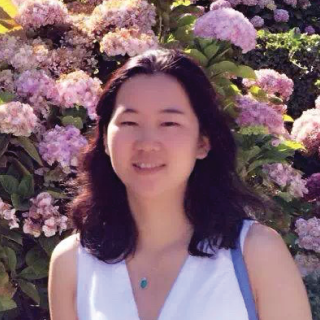
Rong Cai is a postdoc in the Yang Group at the University of California, Berkeley. She received her Ph.D. degree in Chemistry Department from the University of Utah in 2019. Her research focuses on understanding the electron metabolism of microbes and designing inorganic material to deliver electron to bacteria efficiently.

Stefano Cestellos-Blanco is a Ph.D. student in Materials Science & Engineering in the Yang Group under the direction of Professor Peidong Yang at the University of California, Berkeley. He received his B.S. degree in Chemical Engineering from Stanford University in 2016. His research interests lie at the intersection of inorganic materials and molecular biology. He envisions a future in which nanoengineered materials work in cooperation with the natural world. Stefano is investigating biohybrid catalytic systems for the fixation and utilization of CO2 and N2 in the MMFD division of CUBES.
Wesley Chuang is a 1st year Ph.D. student in Chemistry at the University of California Berkeley in Professor Yang's Group. He received his B.S. degree in Chemical Engineering from National Taiwan University in 2017 and M.S. degree in Chemical and Biomolecular Engineering from University of California Berkeley in 2019. His research interest is focused on the CO2 fixation via bio-hybrid system in the MMFD division of CUBES.
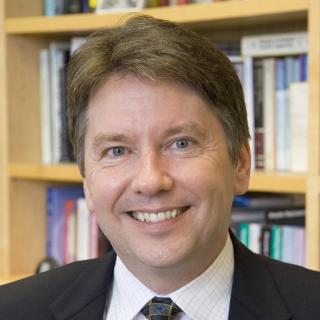
Doug Clark is the Gilbert Newton Lewis Professor in the Department of Chemical and Biomolecular Engineering and the Dean of the College of Chemistry of the University of California Berkeley.
Dr. Clark’s research interests are in biochemical engineering and biocatalysts. His research is in the field of biochemical engineering, with particular emphasis on enzyme technology, biomaterials, and bioenergy. Current projects include the structural characterization and activation of enzymes in non-aqueous media, the development of metabolic biochips for high-throughput catalysis and bioactivity screening, protein design and assembly for the development of advanced biomaterials, and enhanced conversion of lignocellulosic feedstocks to biofuels.

Anna received her B.S in Biotechnology from National Technical University of Ukraine and M.S. in Microbiology from the University of Oklahoma, where she was a Fulbright Scholar. She got her Ph.D. in Biological Engineering from Utah State University. Her M.S. thesis research focused on characterization of ultra-small microorganisms from anoxic sulfur-rich pond using bioinformatics. For her Ph.D. research, Anna worked with local municipal and industrial wastewater treatment facilities to improve microbial transformation of organic waste compounds and algal biomass into valuable bioproducts, such as biogas and bioplastic. She also developed a computational model describing anaerobic microbial granulation in the upflow anaerobic sludge blanket reactors.
Anna is currently a postdoc in the group of Prof. Lance Seefeldt at Utah State University and is working on engineering nitrogen-fixing purple non-sulfur bacteria and bioprocess design.

Brendan, originally from Austin, TX, is a second-year chemical engineering major with a concentration in biotechnology. His research interest lies in the intersection of chemical engineering and synthetic biology. As a part of CUBES, Brendan is currently working with postdoctoral scholar Jacob Hilzinger to genetically engineer cyanobacteria to produce useful biomass in both Earth-based and Mars-based economies.

Ji Min Kim is a 1st year Ph.D. student in Materials Science and Engineering at the University of California Berkeley in the Yang Group. She received her B.S. degree in Materials Science and Engineering from Hanyang University in 2016 and M.S. degree in Materials Science and Engineering from Seoul National University in 2018. Her research interest is focused on the CO2 fixation via a semiconductor nanowire-bacteria hybrid system in the MMFD division of CUBES. The system utilizing light capturing high surface area nanowire array and acetogenic anaerobes enables the photoelectrochemical acetic acid production with long-term stability.

Rhesa discovered her scientific interest many years ago in a high school chemistry class. Her inspirational teacher, Mr. Best—the stereotypical science geek with large bug-eye glasses—taught Rhesa many scientific lessons, but perhaps the greatest was that science is not just for nerdy boys (as her flawed logic thought), it is for anyone.
Currently, a Ph.D. student in the Department of Chemistry and Biochemistry at Utah State University, Rhesa can be found at the laboratory bench doing research focused on understanding and harnessing the amazing abilities of microorganisms. Specifically, she studies the microbial transformation of nitrogen (N2) to ammonia (NH3). This process is a critical part of nature as the majority organisms cannot utilize N2 directly, but need it in a form like NH3 for growth and reproduction. The few microbes that facilitate this conversion provide valuable insight into one of the most biologically challenging reactions and may serve as a catalyst for developing systems for sustainable ammonia production on Mars.
In additional to research, Rhesa also serves as a science reporter for Utah Public Radio and plans to pursue a career in science education and/or communication. Her excitement for not only doing science, but communicating it just might stem from growing up doing musical theater, which she loves. She also enjoys experiencing other cultures, and hot-potting is always on her list of things to do (and yes, it’s partly to see the beautiful microbial mats)!

Elizabeth (Libby) Lineberry is a Chemistry Ph.D. student in the Yang Lab at the University of California, Berkeley, where she works on photosynthetic biohybrids. She received her B.S. in chemistry from Bethany College in 2021. Libby’s research interests include photoelectrochemistry, microbiology, and the combination of these fields to lead to a highly selective artificial photosynthesis system.
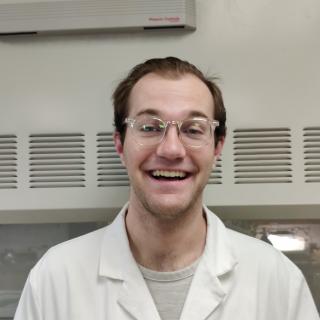
David Merkley is an undergraduate student at Utah State University in his Junior year. He is studying computational mathematics and pre-med. David is from Centerville, Utah and has 3 brothers. When he is not studying for school, you can find David either wakeboarding or skiing the slopes.
David has always wanted to help out other people, which is one reason that led to him towards becoming a physician. David has always said that he wanted to feel like he was helping to make a difference in the world. Another reason is that the human body fascinated him. Wondering how medications interacted with the cells, enzymes, and other elements of the body was something that was always a question for him. He wanted to understand more about the human body and how all of the different parts worked in unison.
One way that you could describe David would be, welcoming and hilarious. He is genuinely concerned with others surrounding him and wishes the best for them. He can always make someone smile, even when they're having a rough day. Individuals seem to feel at ease around him.

Lance C. Seefeldt is Professor of Chemistry and Biochemistry at Utah State University. He received his PhD in Biochemistry from the University of California at Riverside and was a Postdoctoral Fellow in the Center for Metalloenzyme Studies at the University of Georgia. He joined the faculty at Utah State University in 1993. He is the recipient of the D. Wynne Thorne Research Award and is a Fellow of the American Association for the Advancement of Science. He is the Utah State University Institutional PI and lead of the Microbial Media and Feedstock Division of CUBES.
Dr. Seefeldt’s research focus is on biological nitrogen fixation. He has been investigating the mechanism of activation of N2 by the bacterial enzyme nitrogenase. This work has recently lead to the insight that metal-hydrides are central to the reduction of N2 to NH3. He is also investigating how to grow nitrogen fixing bacteria with electrodes as a way to accomplish light-driven reduction of N2 and CO2 as a way to capture and make available these resources from the Martian atmosphere.
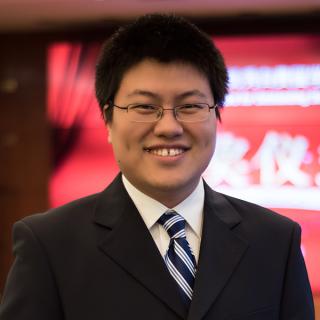
Yuexiao Shen joined Prof. Peidong Yang’s group at UC Berkeley as a postdoc in October, 2017. He finished his Ph.D. from the department of Chemical Engineering at Penn State in 2016. During his Ph.D., he worked on several projects in the interdisciplinary areas of chemical engineering, biology, chemistry and material science. He was focused on developing bioinspired membranes using membrane proteins that mimic the rapid and selective transport as seen in biological membranes. He extended to explore the potential of mimicking biological channels and lipids using supramolecular chemistry and investigating them using biophysical techniques. Yuexiao finished his bachelor and master degrees at Tsinghua University, where he studied environmental engineering. His academic accomplishments include several high-quality publications in journals such as PNAS, JACS and Journal of Membrane Science (JMS), and have been recognized by nationwide academic organizations with a number of very competitive awards. Yuexiao has already been offered an assistant professor position at Department of Civil, Environmental, and Construction Engineering at Texas Tech.

Spencer is originally from Colorado Springs. He received a B.S. in biochemistry from Brigham Young University - Idaho. Currently, he is pursuing a Ph. D in Biochemistry at Utah State University.
Mathangi Soundararajan is a PhD candidate from India currently at Utah State University advised by Lance Seefeldt. She has also been awarded the Presidential Doctoral Research Fellow by Utah State University. She majored in biotechnology in her high school, and went on to get her Bachelors in Biomedical Sciences from Sri Ramachandra University. In her junior year, she was awarded the Undergraduate Summer Research Fellowship by Sri Ramachandra University to study the effects of dairy intake on inflammatory biomarkers in people with Type 2 Diabetes. She also worked as a Research Assistant at the Institute of Mathematical Sciences during her final year, where she studied the genetic susceptibility of Type 2 Diabetes patients to colorectal cancer using bioinformatics methods. Graduating at the top of her batch, she was awarded the 'Best Outgoing Student' medal as well. Her current research interest includes understanding and applying biological nitrogen fixation in bioelectrochemical systems. Her undergraduate research experience has also contributed to her interest in understanding metabolism and the effects of derangements in metabolism. When she is not losing track of time in the research lab, you can find her catching up on TV series and Netflixing.
Alex Starr is a second year undergraduate at University of California Berkeley with interests in synthetic and molecular biology, applied math, artificial intelligence, and the utilization of biology in space exploration. As part of CUBES, he is working to develop a system for the detoxification and enrichment of Martian regolith using the perchlorate reducing bacterium Azospira suillum PS. Prior to joining CUBES, Alex studied expression of genes related to root growth in sunflowers and worked on understanding the genetic basis of drought-tolerant root phenotypes in maize.

Currently Su is a postdoctoral researcher working with Professor Peidong Yang at University of California, Berkeley. His current research focuses on the bioelectrochemical CO2 fixation and N2 reduction. He received his Ph.D. degree in Chemistry on September 2017, with Professor Peidong Yang at University of California, Berkeley. During the Ph.D., he was awarded the MRS Graduate Student Award and the Chinese Government Award for Outstanding Self-financed Student Abroad. Su obtained his B.S. degree in Chemistry from University of Science and Technology of China on 2012, before joining the Peidong Yang Group as a graduate student.
Tom is a Visiting Scholar from the Netherlands completing the research for his master thesis in the Peidong Yang Group. His work is focused on the microbial synthesis of ammonia from dinitrogen gas. Ammonia is essential for a successful manned mission to Mars. However, it is not feasible to achieve the current production method, the Haber-Bosch process, on Mars due to limited resources. Therefore, the search for an alternative way to produce ammonia is paramount to the success of this mission. The reduction of dinitrogen gas with a solar-driven potential and bacteria as catalysts is a very promising way of achieving this.

Kyle Valgardson bachelors of science Biochemistry from Utah Valley University and is currently pursuing a doctorate degree in biochemistry at Utah State University.

Tyler Wallentine is an undergraduate student at Utah State University pursuing Bachelor of Science degrees in biochemistry and biological engineering. Tyler is originally from Meridian, Idaho and comes from a family of nine. He has a passion for space exploration and wants to see the establishment of a Martian colony within his lifetime. He intends to apply his education in engineering and chemistry to help in this endeavor. His interests include chemical engineering, space system development, and environmental biotechnology. He enjoys 3D design and printing, both as a hobby and as a means of accomplishing his engineering goals. He intends to pursue a Ph.D. in bioengineering following his undergraduate studies to further progress towards a research career.
Tyler is currently working with the Microbial Media and Feedstocks Division (MMFD) of NASA CUBES. He has been continuing development of an anaerobic photobioreactor for Rhodopseudomonas palustris NifA*. He is also evaluating the effectiveness of R. palustris to utilize planetary base wastewater to grow and perform nitrogen fixation, to maximize in-situ resource utilization.
Tyler is an avid runner, having participated in both track and cross country in high school. During that time, he ran a marathon and has a personal mile record of 4:44. He also boxes in his free time. He enjoys drawing, painting, and graphic design. He also enjoys movies, camping, and writing.

Nicholas Watanabe is a Ph. D. student in chemistry at the University of California, Berkeley, where he joined the Yang lab in 2021. He received his B.S. in chemistry from Lehigh University in 2018. Nicholas’ research interests lie in using light to power reactions and processes, such as photo(electro)chemical fixation of carbon dioxide by acetogens. To this day, he still finds microbes and all that they can do fascinating, whether it is saving the world one CO2 molecule at a time or placing the finishing touches on tea, coffee, or dry-aged meats.

Kelly Wetmore is a graduate student in Adam Arkin’s lab at UC Berkeley with over 15 years of experience in microbial physiology and genetics before and during graduate school. She has been instrumental in developing a number of next-generation tools and protocols for microbial functional genomics. Kelly is supporting the CUBES team in applying these tools to optimize the core biomanufacturing microbes in physiologically more-or-less relevant conditions. She is also part of a large DOE environmental systems biology project in which she is developing a new technology to query high-throughput genetic interactions.
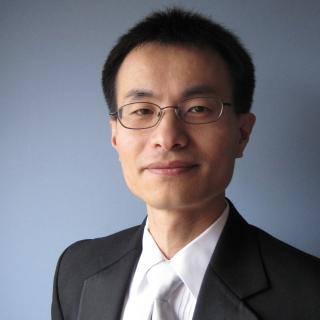
Peidong Yang received a B.S. in chemistry from University of Science and Technology of China in 1993 and a Ph.D. in chemistry from Harvard University in 1997. He did postdoctoral research at University of California, Santa Barbara before joining the faculty in the department of Chemistry at the University of California, Berkeley in 1999. He is currently professor in the Department of Chemistry, Materials Science and Engineering; and a senior faculty scientist at the Lawrence Berkeley National Laboratory. He is S. K. and Angela Chan Distinguished Chair Professor in Energy. He was recently elected as MRS Fellow, and as a member of the National Academy of Sciences and American Academy of Arts and Sciences.
He is the director for California Research Alliance by BASF, and co-director for the Kavli Energy Nanoscience Institute. He is one of the founding members for DOE Energy Innovation Hub: Joint Center for Artificial Photosysnthesis (JCAP) and served as its north director for the first two years. Yang is an associate editor for Journal of the American Chemical Society and also serves on editorial advisory board for number of journals including Acct. Chem. Res. and Nano. Lett. He was the founder of the Nanoscience subdivision within American Chemical Society. He has co-founded two startups Nanosys Inc. and Alphabet Energy Inc. He is the recipient of MacArthur Fellowship, E. O. Lawrence Award, ACS Nanoscience Award, MRS Medal, Baekeland Medal, Alfred P. Sloan research fellowship, the Arnold and Mabel Beckman Young Investigator Award, National Science Foundation Young Investigator Award, MRS Young Investigator Award, Julius Springer Prize for Applied Physics, ACS Pure Chemistry Award, and Alan T. Waterman Award. According to ISI (2002-2012, Thomas Reuters), Yang is ranked as No. 1 in materials science and No. 10 in chemistry based on average citation per paper. His main research interest is in the area of one dimensional semiconductor nanostructures and their applications in nanophotonics and energy conversion

He is currently working as a Researcher with Professor Dr. Lance C. Seefeldt at Utah State University. He received his PhD in Organic Chemistry from Nankai University, Tianjin, China in 2007 and PhD in Biochemistry from Utah State University in 2013. After that, he continuously worked with Dr. Lance Seefeldt as postdoctoral fellow focusing on understanding nitrogenase mechanism with a broad range of interdisciplinary strategies, including biochemical, biophysical, and electrochemical methods. His research interests include metalloenzymes, small molecule activation, and relevant catalyst design and mechanistic studies.

Hao Zhang is a 4th year graduate student in Chemistry at University of California Berkeley with Prof. Peidong Yang. She received her B.S in Material Science and Engineering from University of Science and Technology of China (USTC) in 2014.
Her research is focused on the CO2 fixation via photosynthetic biohybrid systems(PBSs) in the MMFD division. The non-photosynthetic bacteria could be photosensitized by using the semiconductors to reduce the CO2 into multicarbon products, such as acetate, ethanol, and other valuable products. Such PBSs inherits both the high light-harvesting efficiency and the superior catalytic performance from solid-state semiconductors and whole-cell microorganisms, respectively.